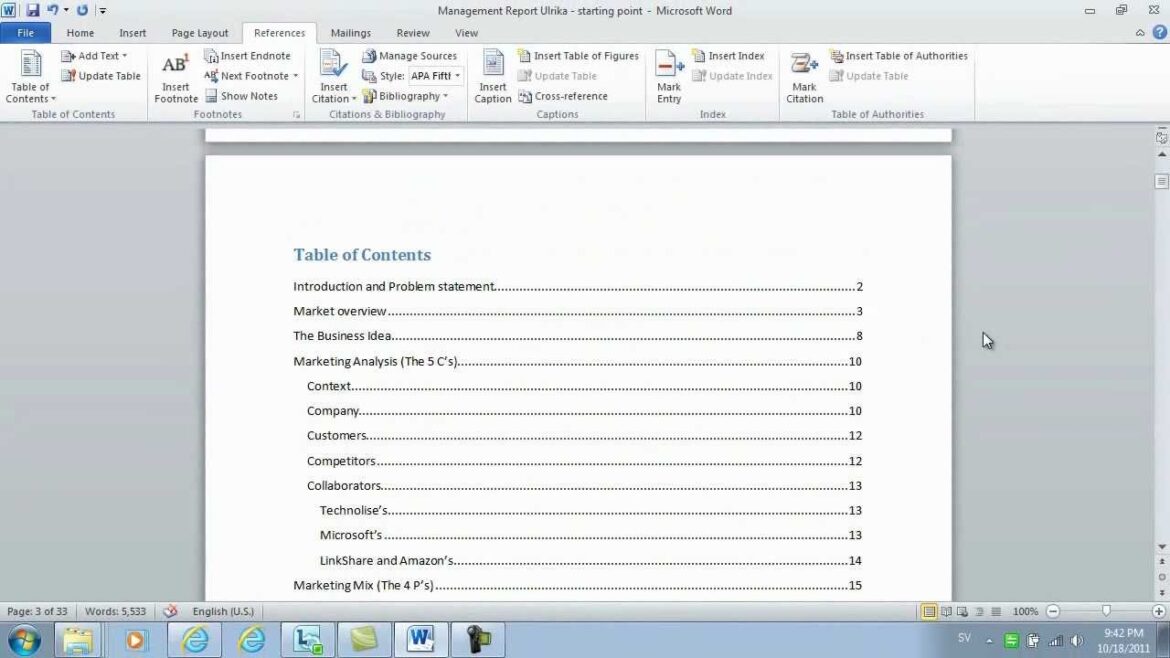779
A table of contents is not only easy to create in Word, but is also extremely useful for providing the reader with quick orientation
Creating a table of contents in Word – how to proceed
To insert an automatic table of contents in Word, you just need to follow a few simple steps. Word automatically generates the table of contents based on the headings you have used in your document.
- Using style sheets: The first and most important step is to format your chapters and sections correctly. Word uses headings to create the table of contents. You must therefore ensure that all chapter headings are formatted with the appropriate styles such as “Heading 1”, “Heading 2” etc.
- To do this, you must select the heading of a chapter or section. Then click on the “Format templates” group in the start menu and select the appropriate heading (Heading 1 for main chapter, Heading 2 for subchapter, etc.).
- Insert table of contents: Once you have formatted your headings, you can insert the table of contents: Place the cursor where you want the table of contents to appear in the document (usually at the beginning after the cover page).
- Once you have selected the desired location, click on the “References” tab in the menu. Then select the desired template in the “Table of contents” section (for example “Automatic directory”). Word will now create a table of contents based on the previously formatted headings.
- Update table of contents: If you make changes to the document later – such as adding new chapters or renaming existing ones – you will need to update the table of contents: To do this, simply click anywhere in the table of contents. The “Update table of contents” option will appear at the top of the screen.
- Select this and decide whether only the page numbers or the entire directory should be updated.
Why a table of contents is important in Word
A table of contents is an indispensable element in extensive documents such as scientific papers, reports, manuals or even longer presentations and offers numerous advantages.
- Overview: The table of contents summarizes the chapters and subchapters of a document and displays them in a hierarchical order.
- Time-saving: With a table of contents, readers can quickly jump to the desired topics without having to scroll through the document for a long time.
- Automatic update: Once a table of contents has been created in Word, it can be updated with one click when new sections are added or existing chapters are renamed.
- Professional impression: A well-structured table of contents conveys professionalism and is often a prerequisite for formal documents such as theses.

